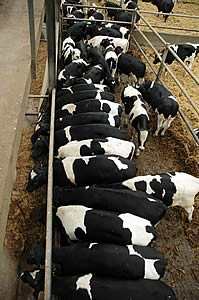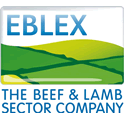12/01/09
Annual returns from English bull beef production could be increased by £2.3 million or more through determined action to reduce dark cutting beef, calculates EBLEX Ltd, the industry body for beef and lamb levy-payers in England, following its latest research into the problem.
Conducted by the University of Bristol, the research reveals the incidence of dark cutting beef in commercial practice is currently as high as 10% of young bulls slaughtered. With EBLEX estimating that dark cutting typically reducing carcase values by around 35p/kg – or £115/animal for an average weight young bull – this means the problem could be costing the industry around £2.3 million per year. And this is before any consideration of carcase downgrading through the high levels of bruising which may accompany dark cutting.
Dark cutting beef is usually caused by stress around the time of slaughter, with mixing of unfamiliar animals leading to fighting and mounting behaviour possibly exacerbated by the fatigue of transport.
With more favourable economics likely to mean more bulls being reared over the coming year, EBLEX points out that careful management of bulls in stable social groups is the key to avoiding dark cutting problems. It provides the following best practice guidelines to help the industry avoid unnecessary losses:
- Never mix bulls with unfamiliar animals (other bulls, steers or heifers reared in a different social group) at any time in the two weeks prior to slaughter.
- Never hold bulls, even for the shortest period, with unfamiliar animals in farm rearing pens or raceways, loading pens or transport compartments, lairage pens or raceways.
- If bulls from separate rearing pens are needed to make up a consignment of animals for slaughter, clearly colour-mark all stock to prevent accidental mixing at any stage in the journey from pen to slaughter.
- Consider rearing bulls in relatively large groups of 40 or more despite more variable growth rates to allow sufficient numbers to be drafted for slaughter with the least possible need for mixed consignments.
- If regrouping, and therefore mixing, of bulls is essential for good husbandry or if mixing occurs accidentally, keep animals in their new social groups for a minimum of two weeks before sending them for slaughter.
- If individual bulls have to be removed from a pen and kept separate for a time, never return them to their original group. Instead put them into a new group of younger, smaller animals where the size difference will prevent bullying of the single animal.
- Never move groups of bulls to new pens unnecessarily and, wherever possible, avoid frequent weighing and re-tagging or clipping out within a week of slaughter.
- Always make water available to bulls right up to the time of loading for slaughter; handle them quietly set off immediately they are loaded; keep journey times to a minimum; and preferably, slaughter them promptly on arrival at the abattoir.
 NBA Warns of Beef Breeding Cow Shortage NBA Warns of Beef Breeding Cow Shortage
 Pedigree Limousin Sales Go Through £5 Million Mark Pedigree Limousin Sales Go Through £5 Million Mark
 Accurate Feed and Medicine Records Could save Billions Accurate Feed and Medicine Records Could save Billions
|



